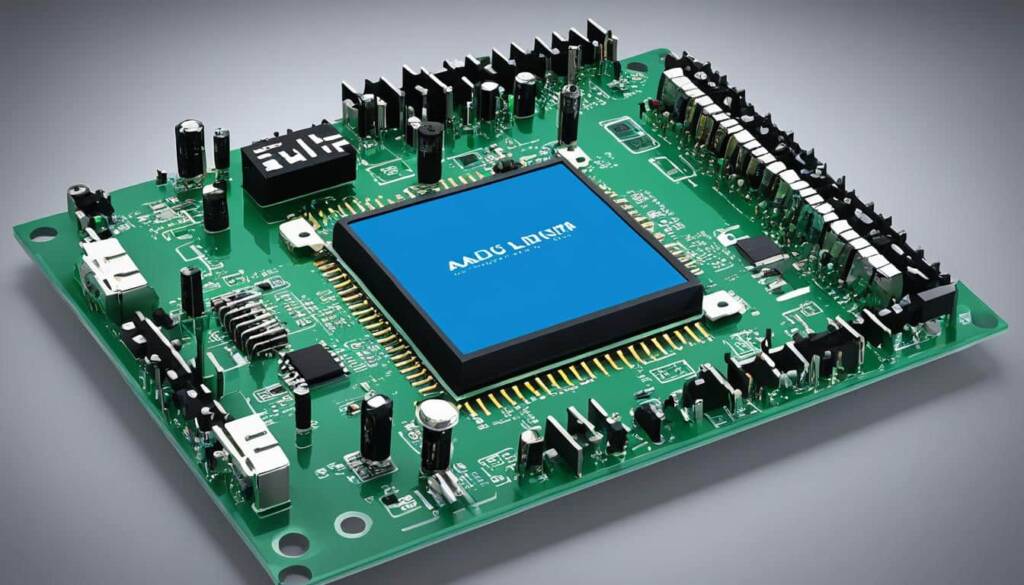Table of Contents
Analog-to-digital conversion, or ADC, is a fundamental process in tech and electronics that involves converting continuous analog signals into discrete digital ones without altering the essential content of the signal. ADCs are used to transform various types of analog signals, such as sine waves, speech waveforms, and television camera signals, into binary digital signals with defined levels or states.
The number of states in an ADC is typically a power of two, and the simplest digital signals have only two states, known as binary signals. Digitization is important because digital signals propagate more efficiently than analog signals and are easier for electronic circuits to distinguish from noise. Computers primarily work with binary digital data, so analog data needs to be converted into digital form for computers to process it.
The Nyquist theorem, also known as the Nyquist-Shannon sampling theorem, is a fundamental principle behind analog-to-digital conversion. It states that to accurately reproduce an analog signal, it must be sampled at a rate at least twice its frequency. This theorem ensures that the right amount of information is gathered during the conversion process and helps prevent aliasing or the production of false frequencies.
ADC technology has played a significant role in the development of voice communication systems, such as voice over IP (VoIP), and has been essential in the transition from old-style analog signal processing to digital systems.
How Does an ADC Work?
An ADC, or analog-to-digital converter, functions by comparing samples of an analog input voltage against a known reference voltage. This process results in the production of a digital representation of the analog input. To accomplish this, the ADC samples the analog signal using a Sample and Hold circuit. The samples are then compared to the reference voltage in order to determine the digital output of the ADC.
The output of an ADC is a binary code, where each bit represents a different level of the analog signal. However, due to the nature of the conversion process, there is a phenomenon known as quantization error, which is the information that is lost during the conversion. This occurs because while there are an infinite number of voltages for a continuous analog signal, there are only a finite number of digital codes that the ADC can produce. The resolution of the ADC determines the magnitude of the quantization error.
The Nyquist principle, derived from the Nyquist-Shannon sampling theorem, is vital in the operation of an ADC. It states that the sampling rate of the ADC must be at least twice the maximum bandwidth of the analog signal in order to accurately reproduce it. The maximum bandwidth is referred to as the Nyquist frequency, or Shannon sampling frequency, and it is equivalent to half the sampling rate.
In practice, the sampling rate needs to be higher than the Nyquist frequency due to imperfections in the filters used to reproduce the original signal. For instance, the bandwidth of a standard audio CD is slightly less than the theoretical maximum of 22.05kHz.
By understanding how an ADC works and the factors that influence its performance, we can appreciate the challenges and complexities involved in accurately converting analog signals into digital representations.
Importance of Analog-to-Digital Conversion
Analog-to-digital conversion plays a crucial role in the digitization and digital transformation of various technologies, particularly in the evolution of voice communication systems. The transition from old-style analog signal processing to digital systems, such as voice over IP (VoIP), has been made possible by the advancement of ADC technology.
In the past, telephone systems were limited in their ability to directly communicate with computers. However, the emergence of modems bridged this gap by utilizing ADC technology to convert incoming audio signals from telephone lines into digital signals that computers could process. This breakthrough paved the way for the integration of telephony with computing systems.
One notable application of ADC technology is in the development of digital private branch exchange (PBX) systems. These systems leverage fully digital switching architectures, with ADC units embedded in telephone sets and within the switch itself, to convert analog voice signals into digital bit streams. This enables seamless integration with the digital switch and facilitates efficient voice communication in PBX environments.
Additionally, ADC technology is instrumental in processing video signals for transmission alongside voice communications. By converting video signals into digital bit streams, images can be seamlessly transmitted along with voice data, enabling real-time video conferencing, multimedia streaming, and other visual communication applications.
The future of analog-to-digital conversion looks promising, as it continues to drive innovation in computing devices and support the ongoing digital transformation. From voice communication systems to video processing, ADC technology plays a pivotal role in advancing various aspects of digitization, enabling enhanced connectivity and efficient data transmission.
Key Takeaways:
- Analog-to-digital conversion enables the digitization and digital transformation of technologies.
- ADC technology has facilitated the integration of voice communication systems with computing systems.
- Digital PBX systems utilize ADC units to convert analog voice signals into digital bit streams for efficient communication.
- ADC technology enables the processing of video signals for transmission alongside voice communications.
- The future of analog-to-digital conversion is expected to bring continued advancements in computing devices and support ongoing digital transformation initiatives.
Resolution and Accuracy of ADCs
The resolution of an ADC, or analog-to-digital converter, is a crucial factor in determining its accuracy and the fidelity of the digital representation of the analog input signal. Resolution refers to the number of discrete values that the ADC can produce over the range of analog input values. The higher the resolution, the more precise the ADC can represent the analog signal, resulting in greater accuracy and reduced loss of information due to quantization error.
Resolution is typically expressed in bits, with a higher bit depth indicating a higher resolution. For example, an ADC with a resolution of 12 bits can represent the analog input signal with 2^12 or 4,096 discrete values. Alternatively, resolution can also be defined electrically and expressed in volts, representing the change in voltage required to guarantee a change in the output code level.
In addition to quantization error, which is related to the resolution, other factors can affect the accuracy of ADCs. Nonlinearity is one such factor, which can introduce distortion and reduce the overall accuracy of the conversion process. Integral nonlinearity and differential nonlinearity are types of nonlinearity that can affect the linearity of the ADC’s conversion process.
Another factor that can impact the performance of an ADC is jitter. Jitter refers to the uncertainty or variability in the sampling time of the analog input signal. This uncertainty can introduce additional noise and reduce the effective number of bits (ENOB) of the ADC, affecting its accuracy. To address the effects of quantization error, techniques such as quantization distortion and dithering are employed. Dithering involves introducing random noise to the analog signal, which can improve the overall accuracy of the conversion process, particularly for low-level signals.
The accuracy of an ADC is crucial for obtaining precise measurements and maintaining the fidelity of analog signals in the digital domain. By understanding the resolution, quantization error, nonlinearity, and the impact of jitter, engineers can make informed decisions when selecting and utilizing ADCs in various applications.
FAQ
What is analog-to-digital conversion (ADC)?
ADC is a fundamental process in tech and electronics that converts continuous analog signals into discrete digital signals without altering the essential content of the signal.
Why is digitization important in technology?
Digital signals propagate more efficiently than analog signals and are easier for electronic circuits to distinguish from noise. Computers primarily work with binary digital data, so analog data needs to be converted into digital form for computers to process it.
What is the Nyquist theorem and how does it relate to ADC?
The Nyquist theorem, also known as the Nyquist-Shannon sampling theorem, states that to accurately reproduce an analog signal, it must be sampled at a rate at least twice its frequency. This theorem ensures that the right amount of information is gathered during the conversion process and helps prevent aliasing or the production of false frequencies.
How does an ADC work?
An ADC works by comparing samples of an analog input voltage to a known reference voltage and producing a digital representation of the analog input. The analog signal is sampled using a Sample and Hold circuit, and the samples are compared to a reference voltage to determine the digital output of the ADC.
Why is resolution important in ADCs?
Resolution refers to the number of discrete values an ADC can produce over the range of analog input values. A higher resolution means greater accuracy and less loss of information due to quantization error.
What is nonlinearity and how does it affect ADC performance?
Nonlinearity is a source of errors in ADCs that can lead to distortion and reduced accuracy. There are several types of nonlinearity, including integral nonlinearity and differential nonlinearity, which affect the linearity of the conversion process.
What is jitter and how does it impact ADC performance?
Jitter refers to the uncertainty in the sampling time of the analog input signal, which can introduce additional noise and reduce the effective number of bits (ENOB) of the ADC.
How are quantization distortion and dithering used in ADCs?
Quantization distortion and dithering are techniques used to address the effects of quantization error in ADCs. Dithering introduces random noise to improve the overall accuracy of the conversion process, particularly for low-level signals.
Why is accuracy important in ADCs?
The accuracy of an ADC is crucial for obtaining precise measurements and faithful representation of analog signals in the digital domain.












